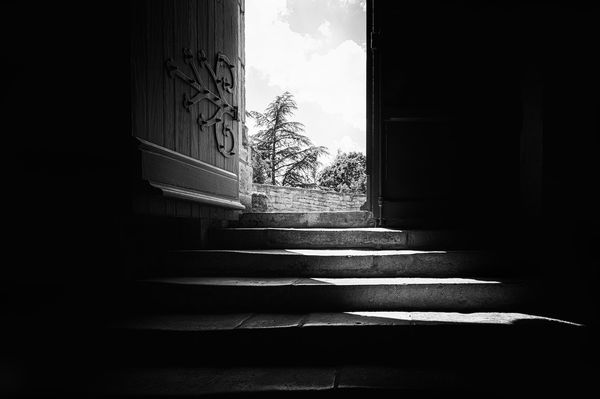
Hold The Door Open
Though it’s currently in vogue to threaten the President with ricin, the fashion when I was a younger man was to intimidate newspapers with anthrax. During those heady days I happened to work at a newspaper, and as always the terrifying eventually evolved into the mundane, so efforts to protect the staff got reduced to the mailman delivering our packages while wearing latex gloves and a sign being taped inside the main door to our office. The sign had no doubt hastily been prepared in Microsoft Word by someone struggling to deal with the very real possibility of a deadly attack on their coworkers, but by just a few months later, it already seemed an odd artifact of an era of duct tape and color-coded alert levels. The sign said this: DO NOT HOLD THE DOOR OPEN FOR ANYONE.
Do not hold the door open for anyone. Later, the sign was revised to something more polite, doing a better job of explaining that this simple glass door was supposed to represent a last line of defense against some unforseeable biochemical attack.
But I think about that sign pretty regularly, as a manifestation of how people who are afraid act. I am a person who has a better life because some kind strangers held the door open for me for just that one extra moment. It was especially appreciated because the elevator in 36 Cooper Square took forever to arrive.
Be Kind
These are two posts that both arrived on Sunday. I don’t know if they were coordinated, but they connected in a way that I found pretty powerful.
Cap Watkins, design lead at Etsy, asked us to Be Kind:
I was working out of my apartment fulltime, and hadn’t met a single person in the bay area outside the people working with me on PMOG. One day, I decided I wanted to meet some designers in San Francisco. So, I did the only thing I could think of: made a list of web sites I thought were well-designed, figured out who designed them and sent a cold email to the designer telling them I was a new designer in the area and asking if they’d like to get coffee or a beer sometime. In all, I probably sent around 20-30 emails to a variety of creative people in San Francisco.
I received a single reply.
Daniel Burka (who at the time was the creative director at Digg) said that, sure, he’d love to grab coffee. We set up a time and I took the train to the city to meet up with him and his friend Mark. We chatted for awhile and, just before we left, they both mentioned that they were going rock climbing the next morning with friends, and asked if I’d like to join.
Absolutely, I did. … I wonder sometimes about where I would be now if Daniel hadn’t responded to that email. Most likely, I would have gone back home to Louisiana after PMOG. I wouldn’t have known anyone in San Francisco, wouldn’t have known how to even start looking for new work, etc.
And from Daniel Burka, the Google Ventures design partner mentioned in Cap’s piece? A rumination about Doug Bowman:
Nine years ago, I sent a tentatively worded email to Doug Bowman asking if he’d meet up for a coffee when I visited San Francisco for work. At the time, Doug had just launched the new Hotwired site, which was the most incredible, amazing, mind-blowing achievement in web standards at the time. No way did I think that Doug would agree to get coffee with a handful of nobodies from Eastern Canada.
And then he responded. And said yes! And even knew some of the work we’d done (or was generous enough to look us up on the way to the café). And he didn’t talk down to us. And he treated us like COLLEAGUES, not like disciples. And he was just a human.
I’m not exaggerating when I describe this as a seminal moment in my design career. The fact that Doug Bowman treated me like I belonged in the same league allowed me to believe that maybe I really did play in the same league. What a wonderful boost of confidence!
I don’t think it’s coincidence that Cap and Daniel and Doug work in design, a discipline that at its best is grounded in empathy, but regardless of which field they happened to work in, they offer examples of exactly the serendipity and opportunity that can arise when we hold the door open, just a little bit, for that person entering behind us. All we have to do is not be afraid of who we’re letting in.
You may also want to see How Jason Fried’s opinion made it into the New York Times.